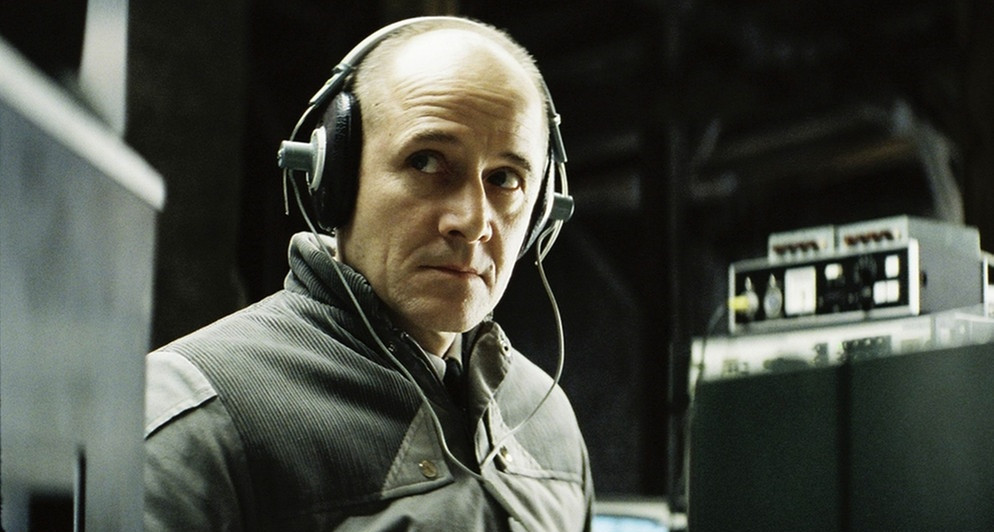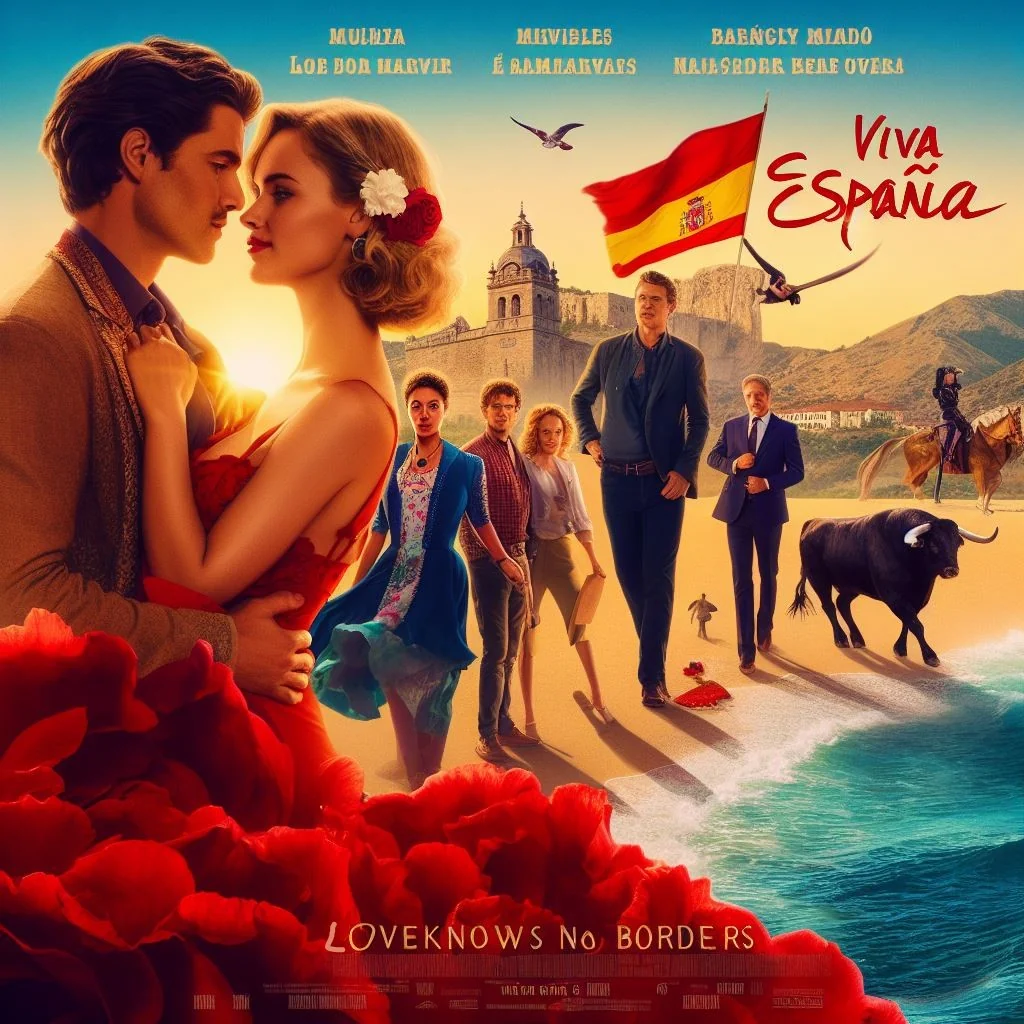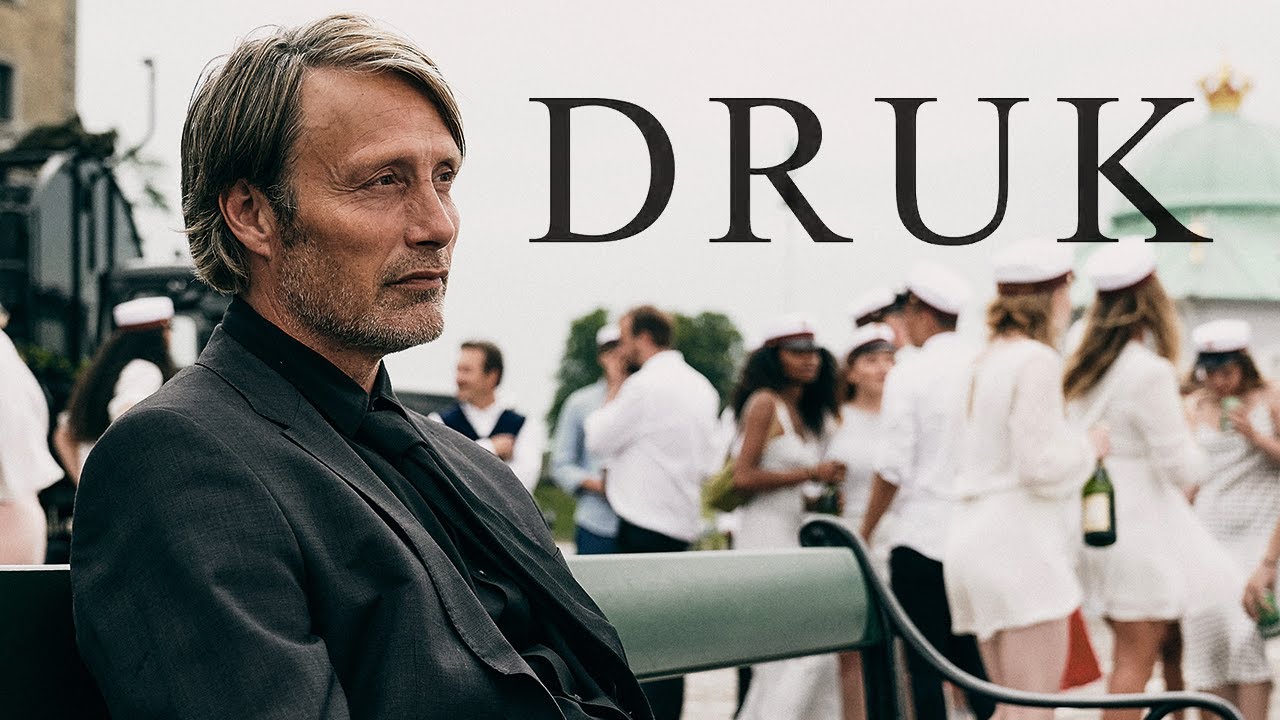Deep Review In Cultural Diversity In European Cinema
European cinema, with its rich tapestry of cultures and histories, serves as a dynamic reflection of the continent's diversity. This article explores how filmmakers from different corners of Europans have embraced and celebrated cultural diversity in Europe cinema, contributing to a cinematic landscape that is as varied as the cultures it represents.
Jan 24, 20240 Shares73 Views

European cinema, with its rich tapestry of cultures and histories, serves as a dynamic reflection of the continent's diversity. This article explores how filmmakers from different corners of Europans have embraced and celebrated cultural diversity in Europe cinema, contributing to a cinematic landscape that is as varied as the cultures it represents.
Multicultural Narratives - Celebrating Complexity
European cinema stands as a testament to its ability to embrace and celebrate the rich tapestry of multicultural narratives. Filmmakers, recognizing the diversity within the continent, have skillfully crafted stories that delve into the intricate intersections of various cultural identities.
Embracing Diversity In Storytelling
In the expansive world of European cinema, diversity isn't merely recognized; it's a cause for celebration. Filmmakers spanning the continent have transcended traditional storytelling, venturing into the intricacies and splendor woven into the fabric of multiculturalism. These narratives serve as a lens, inviting audiences to delve into the profound and vibrant tapestry of diverse cultural experiences. If you're captivated by the richness of European experiences, you might also find value in EHIC, a resource offering insights into health coverage while exploring the cultural diversity Europe has to offer.
Exploring Intersections
Filmmakers adeptly navigate the intersections of cultures, presenting stories that unfold in spaces where different cultural backgrounds converge. These narratives go beyond mere representation, offering audiences a nuanced understanding of the dynamics at play when diverse cultures coexist. The exploration of these intersections becomes a compelling narrative thread, inviting viewers to reflect on the shared human experiences that transcend cultural boundaries.
Beyond Stereotypes
One notable aspect of multicultural narratives in European cinema is the conscious effort to move beyond stereotypes. Filmmakers engage in storytelling that challenges preconceived notions and portrays characters with depth and authenticity. By doing so, they contribute to a more profound and meaningful dialogue about cultural diversity, fostering empathy and understanding among audiences.
Social Commentary
Multicultural narratives often serve as a powerful tool for social commentary. Filmmakers use their storytelling prowess to shed light on societal issues, cultural clashes, and the evolving dynamics within diverse communities. These films become a mirror reflecting the ever-changing landscape of European societies, prompting audiences to confront and contemplate the complexities of cultural coexistence.
Humanizing Cultural Experiences
In the hands of skilled directors, multicultural narratives humanize cultural experiences. Viewers are invited to step into the shoes of characters from diverse backgrounds, fostering a sense of empathy and connection. Through storytelling that emphasizes shared emotions and universal themes, European cinema transcends borders, creating a cinematic language that speaks to the common threads that bind humanity.
Impact On Audience Understanding
These multicultural narratives play a pivotal role in shaping audience perceptions and understanding of cultural diversity. European cinema becomes a vehicle for fostering a more nuanced and informed perspective on the intricacies of multicultural societies.
Cultural Education
By presenting diverse cultural narratives, European filmmakers inadvertently become cultural educators. Audiences are exposed to traditions, customs, and ways of life that might be unfamiliar. This exposure, far from being didactic, occurs organically within the context of engaging narratives, enriching the cultural literacy of viewers.
Breaking Stereotypes
Multicultural narratives contribute significantly to breaking down stereotypes and dismantling cultural biases. As audiences become immersed in stories that defy simplistic categorizations, they begin to question preconceived notions and embrace a more open-minded approach to understanding the complexities of diverse cultures.
Fostering Empathy
One of the remarkable outcomes of experiencing multicultural narratives is the fostering of empathy. When audiences connect with characters navigating the challenges of cultural diversity, they develop a deeper understanding of the human experience across different backgrounds. This empathetic connection becomes a powerful force for building bridges and fostering inclusivity.
Challenging Assumptions
European cinema's commitment to multicultural narratives challenges assumptions and encourages critical thinking. Viewers are prompted to question cultural stereotypes, confront biases, and appreciate the nuanced narratives that unfold on the screen. In doing so, these films contribute to a more enlightened and open-minded society.
Regional Cinemas - A Microcosm Of Diversity
In the vast realm of European cinema, the richness of cultural diversity extends beyond national borders, finding its expression in the unique cinematic identities of different regions. Each corner of Europe boasts its own distinctive narrative style, themes, and storytelling techniques, contributing to the larger mosaic of cinematic brilliance.
Nordic Cinema - Poetic Landscapes And Existential Reflections
Nordic cinema, hailing from the northern reaches of Europe, is characterized by its poetic landscapes and a penchant for existential reflections. Filmmakers from countries like Sweden, Denmark, Norway, Finland, and Icelandbring a distinct Nordic flavor to the screen. The vast and awe-inspiring natural landscapes often become integral elements of storytelling, reflecting the deep connection between the characters and their surroundings.
Eastern European Cinema - Historical Depth And Artistic Innovation
Eastern European cinema unfolds against a backdrop of historical depth and artistic innovation. Countries such as Poland, Hungary, Czech Republic, and Romania have produced films that delve into the complex tapestry of their histories. Filmmakers from this region often infuse their narratives with a sense of cultural introspection, exploring themes of identity, resilience, and the impact of political upheavals.
Southern European Cinema - Passion, Tradition, And Sunlit Landscapes
The films emanating from Southern Europe, including Italy, Spain, Greece, and Portugal, bring forth a unique blend of passion, tradition, and sunlit landscapes. Southern European cinema is often characterized by its vibrant storytelling, rich cultural traditions, and a celebration of life's nuances. The warmth of the Mediterranean sun becomes a cinematic backdrop that infuses the narratives with a distinct Mediterranean charm.
Central European Cinema - Crossroads Of Cultures
Central European cinema, situated at the crossroads of diverse cultures, weaves narratives that reflect the confluence of different influences. Countries like Austria, Germany, and Switzerland contribute to a cinematic landscape that explores the intersections of cultures and the evolving dynamics of modern society. Central European films often grapple with questions of identity and the impact of globalization.
Western European Cinema - Urban Sophistication And Cultural Exploration
Western European cinema, encompassing countries like France, the United Kingdom, Germany, and Belgium, often embodies urban sophistication and a keen exploration of cultural dynamics. Filmmakers from this region delve into contemporary issues, societal complexities, and the evolving nature of relationships. The diverse urban landscapes become integral settings for narratives that capture the pulse of Western European societies.
The Balkans - Turbulent Histories And Resilient Spirits
The Balkanregion, with its turbulent histories and resilient spirits, contributes to European cinema with narratives that reflect the complexities of the human experience. Films from countries like Serbia, Bosnia and Herzegovina, and Croatia often explore the aftermath of conflict, the resilience of communities, and the search for healing and reconciliation.
Appreciating Microcosms Of Diversity
Exploring regional cinemas within Europe allows audiences to appreciate the microcosms of diversity that exist within the larger context. Each region, with its unique cultural, historical, and geographical influences, adds a distinct brushstroke to the canvas of European cinema. By delving into these regional microcosms, viewers gain a deeper understanding of the multifaceted nature of the continent's cinematic landscape.
Cross-Pollination And Collaboration
While regional cinemas showcase unique identities, there is also a fascinating cross-pollination of ideas and collaboration between filmmakers from different regions. Co-productions and collaborative projects contribute to the dynamic evolution of European cinema, enriching the storytelling tapestry with diverse perspectives and influences.
Representation Of Marginalized Voices - A Cinematic Revolution
Within the vast canvas of European cinema, a transformative wave is sweeping through as filmmakers increasingly embrace the imperative of representing marginalized voices. This commitment goes beyond mere storytelling; it is a conscious effort to amplify the narratives of minority communities, shedding light on their struggles, triumphs, and unique cultural contributions. In doing so, European cinema not only reflects the diverse tapestry of its societies but also strengthens its own fabric through inclusivity.
From Periphery To Center Stage
European cinema is undergoing a paradigm shift where narratives that were once on the periphery are now taking center stage. Filmmakers are moving away from traditional storytelling norms, seeking to explore the lived experiences of marginalized communities. By bringing these narratives to the forefront, European cinema acknowledges the richness that comes from embracing the voices that have been historically marginalized.
Authentic Storytelling
In the quest for authentic storytelling, filmmakers are actively engaging with members of marginalized communities. This involves collaborative efforts to ensure that the narratives are not only accurately portrayed but also imbued with the nuances and authenticity that can only come from the lived experiences of those being represented. Authentic storytelling becomes a powerful tool for breaking stereotypes and dispelling misconceptions.
Exploring Struggles And Triumphs
European cinema is becoming a platform for exploring the multifaceted nature of the struggles faced by marginalized communities. From discrimination and social injustices to the triumphs and resilience of individuals within these communities, filmmakers are crafting narratives that resonate with authenticity. These stories serve as both a mirror reflecting societal challenges and a beacon of hope showcasing the strength and resilience of marginalized voices.
Cultural Contributions And Heritage
Inclusivity in European cinema extends beyond addressing challenges; it encompasses celebrating the unique cultural contributions and heritage of marginalized communities. Filmmakers are delving into the richness of cultural expressions, traditions, and histories that may have been overlooked. This celebration not only adds depth to cinematic narratives but also fosters a broader appreciation for the cultural diversity within European societies.
Intersectionality In Narratives
European filmmakers are increasingly embracing intersectionality in their narratives. Recognizing that individuals often navigate multiple layers of identity, including race, gender, and sexuality, films are exploring the intersections of these aspects. This nuanced approach allows for a more comprehensive representation of the complex realities faced by individuals within marginalized communities.
Amplifying LGBTQ+ Voices
The LGBTQ+ community, often marginalized in mainstream narratives, is finding a prominent place in European cinema. Filmmakers are telling stories that authentically capture the experiences, struggles, and triumphs of individuals within the LGBTQ+ community. This representation contributes to a more inclusive and diverse portrayal of love, identity, and relationships on the cinematic stage.
Disability Representation
Another significant aspect of the evolving inclusivity in European cinema is the increased representation of individuals with disabilities. Filmmakers are shedding light on the challenges faced by people with disabilities while also highlighting their talents, aspirations, and contributions to society. This representation fosters a more inclusive and accessible cinematic landscape.
Changing The Narrative Landscape
The representation of marginalized voices is not just a trend but a transformative force reshaping the narrative landscape of European cinema. By giving voice to those who have been historically underrepresented, filmmakers are contributing to a more inclusive and reflective cinematic medium. This shift is not only a cultural imperative but also a powerful step towards fostering empathy and understanding.
European Cinema - FAQs
What Is European Cinema Called?
European cinema refers to the collective body of films produced across the diverse countries of the European continent. There isn't a single term used universally to describe European cinema, as each country contributes to a mosaic of cinematic styles and genres. However, the term "Eurocinema" is sometimes used colloquially to encompass the broad range of films originating from Europe.
What Are The Characteristics Of European Cinema?
European cinema is characterized by several distinctive features:
- Multilingualism:European films often feature multiple languages, reflecting the linguistic diversity within the continent.
- Artistic Exploration:Many European films are known for their artistic and experimental approach to storytelling, emphasizing visual aesthetics and nuanced narratives.
- Cultural Diversity:European cinema celebrates cultural diversity by exploring various cultural identities and reflecting the complexities of multicultural societies.
- Social Realism:A significant number of European films engage in social realism, addressing societal issues and presenting authentic portrayals of everyday life.
- Emphasis on Character Development:European films often prioritize character development over plot-driven narratives, allowing for in-depth exploration of the human experience.
- Innovative Filmmaking Techniques:European filmmakers are known for their willingness to experiment with cinematic techniques, challenging traditional norms and pushing the boundaries of storytelling.
What Is The Difference Between European And Hollywood Movies?
Narrative Style:
European Cinema focuses on character-driven narratives with an emphasis on exploring complex emotions and relationships. In contrast, Hollywood Movies are often characterized by plot-driven narratives with a strong emphasis on action, spectacle, and clear resolutions.
Production Scale:
European Cinema tends to have smaller budgets, resulting in more intimate and artistically driven productions. On the other hand, Hollywood Movies typically involve large-scale productions with higher budgets, leading to spectacular visual effects and grand storytelling.
Cultural Specificity:
European Cinema embraces cultural specificity, often rooted in the unique histories, traditions, and landscapes of individual European countries. In contrast, Hollywood Movies are often designed for a global audience, with storylines and characters that may be more universally relatable.
Genre Preferences:
European Cinema explores a wide range of genres, including drama, comedy, art-house, and historical films. In contrast, Hollywood Movies are frequently associated with genres like action, science fiction, fantasy, and blockbuster productions.
Approach to Endings:
European Cinema tends to favor open-ended or ambiguous conclusions, allowing viewers to interpret and reflect on the story. Hollywood Movies, on the other hand, often feature clear resolutions and conclusive endings, providing a sense of closure for the audience.
Film Industry Structure:
European Cinema is supported by a combination of public funding, co-productions, and independent filmmaking. In contrast, Hollywood Movies are primarily driven by a commercial industry model, with major studios and extensive marketing strategies.
Conclusion
Cultural diversity is not just a facet but the essence of European cinema. Filmmakers, by embracing the myriad cultures and identities within the continent, create a cinematic landscape that resonates with audiences worldwide. European cinema stands as a testament to the richness that arises when diverse voices come together to tell compelling stories on the silver screen.
Latest Articles
Popular Articles

